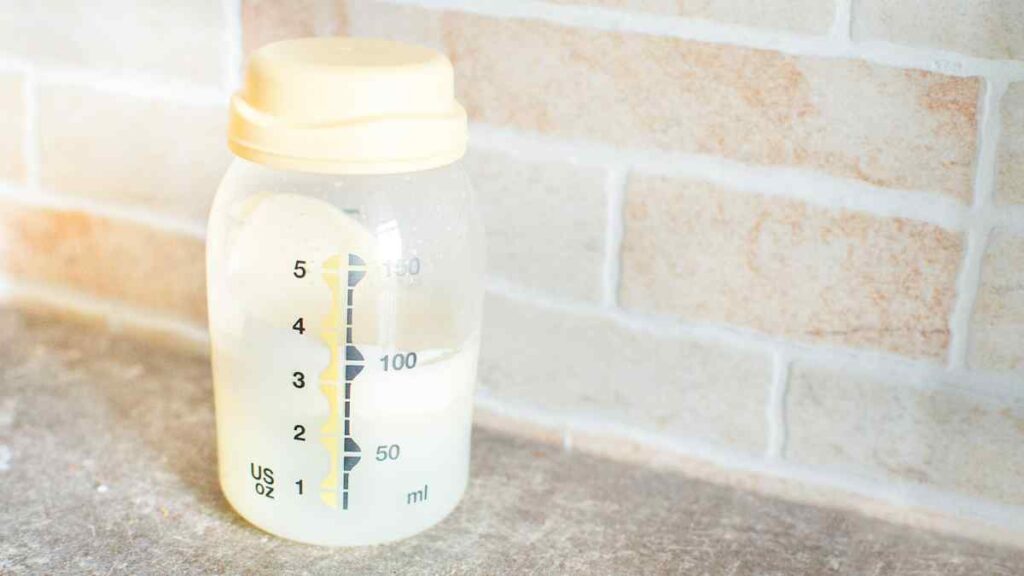As a parent, you want to do everything you can to give your child the best start in life. But sometimes, that means navigating an unfamiliar world like lactose formula, especially concerning nutrition and health.
That’s why we created this guide for parents navigating the world of lactose-free formula: so that you can learn about all the benefits of this kind of formula and how it can help your child grow up strong and healthy!
Understanding Lactose Intolerance in Infants
Lactose intolerance in infants is a common condition that can be managed with a few simple precautions. It’s important to understand lactose intolerance, its causes, and how it affects your baby.
Lactose intolerance occurs when the body lacks an enzyme called lactase, which breaks down the sugar in milk called lactose. When this happens, the undigested sugar passes through your baby’s system and causes diarrhea and other digestive issues.
The most common cause of lactose intolerance in infants is that they have not yet developed enough enzymes to digest milk properly. This happens because babies don’t produce enough lactase until they’re about six months old. However, it’s important to note that lactose intolerance should not be confused with milk protein allergy caused by an immune response to milk protein.
For lactose-intolerant babies, lactose-free formulas are a great option. These formulas are available and can be found in most stores that sell baby products. Remember that some brands may contain more or less lactose than others, so always check labels carefully before purchasing! Some babies with milk allergies may also require low-lactose formulas or hydrolyzed milk protein formula recommended by their baby’s doctor.
If your infant has been diagnosed with lactose intolerance, here are some tips for managing it:
- Avoid cow’s milk and other dairy products until your child is older than 12 months old.
- Try soy formula or rice formula instead of cow’s milk formula until your baby is older than 12 months old. These formulas contain lower lactose levels than regular formulas, so they’re easier for infants’ digestive systems to handle!
- Once your child reaches 12 months old (and has been eating solids), introduce small amounts of low-lactose foods into their diet one at a time to see how they react before adding more foods back into their diet (like bread or cereals)

Lactose-Free Formula Brands and Options
Regarding lactose-free formula, there are a few options available to parents. The most common types of lactose-free formulas are:
Lactose-Free Cow’s Milk-Based Formula
Lactose-free cow’s milk-based formula is an infant formula made from cow’s milk that has had lactose removed. This formula is designed for babies who are lactose intolerant or have a cow’s milk protein allergy. It still contains all the necessary nutrients for a baby’s growth and development, including protein, carbohydrates, fats, vitamins, and minerals.
Lactose-Free Soy-Based Baby Formula
Lactose-free soy-based baby formula, on the other hand, is made from soybeans instead of cow’s milk. It is a suitable alternative for babies with a cow’s milk protein allergy or lactose intolerance. It also contains all the necessary nutrients for a baby’s growth and development.
However, it is important to note that soy-based formula may not be appropriate for all babies, and it’s always best to consult a pediatrician before making any changes to your baby’s diet.
It’s also important to note that this lactose-free formula is not the same as a cow’s milk protein-free formula, as it may still contain cow’s milk protein. It is formulated to be easily digestible for babies who have trouble digesting lactose but not cow’s milk protein allergy.
Some babies with cow’s milk allergy or cow’s milk protein allergy will require a soy-based formula instead of this one (or even both!). It’s also important to note that this lactose-free formula is different from regular cow’s milk-based formulas because it has been specifically formulated for babies who are unable.
Lactose-Free Hydrolyzed Casein Formula
If you’re looking for a lactose-free formula for your baby, this is one of the best options available. It’s designed specifically for infants who are lactose intolerant and contains casein hydrolysate instead of whole casein, which is broken down enzymatically to create a protein that is easier to digest.
Hydrolyzed formulas are similar to milk-based and soy-based formulas but with changes made to the protein component to meet the requirements established by health professionals.
These formulas were designed for infants who have problems with the digestion of protein or severe allergy problems to protein; however, they can also be provided as part of an intervention program if there are problems with fat malabsorption or short gut syndrome (where there isn’t enough room for food absorption).
It’s important to note that not all lactose-free formulas are created equal, and this particular low-lactose formula is one of the most lactose-free formulas available anywhere! It’s also important to consult with a pediatrician before making any changes.
Amino Acid-Based Formula
The amino acid-based formula is a type of formula that is made up of amino acids. Amino acids are the building blocks of proteins, which are vital for many processes in your body.
Some popular brands of lactose-free formula include Similac Alimentum, Enfamil Gentlease, and Nestle Good Start. These formulas are designed for babies who have difficulty digesting lactose, the primary sugar in breast milk, and most recipes. The enzymes in these formulas help break down the lactose so your baby can digest it better.

Preparing and Feeding Lactose-Free Formula
Preparing and feeding lactose-free formula to your baby is similar to preparing traditional formula. Still, there are a few things to keep in mind to ensure your baby gets the nutrition they need.
When Preparing Lactose-Free Formula
The best way to prepare lactose-free formula:
- Make sure the water is not too hot when mixing up their formula. Heat can destroy some of the vitamins in the milk and cause it to lose its nutritional value.
- Make sure that you are using fresh milk and not expired milk. Expired milk can contain harmful bacteria, which could make your baby sick if consumed by them.
- Always follow the directions on how much water to add when mixing up their formula, as this will ensure that it is mixed properly and will not become too thick or thin.
When Feeding Lactose-Free Formula
The best way to feed lactose-free formula:
- Make sure you’re using the right amount of formula. The instructions on the package will tell you how much to use per day, but if your baby is growing well and gaining weight, you’re doing great!
- If possible, use a microwaveable container to heat the formula instead of boiling water on the stovetop–this will ensure that no harmful bacteria get into your baby’s bottle.
- If you’re using powdered formula and want to mix it with breast milk or formula from another container, ensure you mix them well before feeding them to your baby so there isn’t any clumping or separation in their bottle.
Remember, when feeding your baby, be sure not to use other liquids besides water while providing them lactose-free formula–this could cause stomach upset or diarrhea. It’s also important not to add anything else to the formula, like sugar or salt. These things can make your baby sick!

Symptoms to Watch for and How to Address Them
When introducing a lactose-free formula to your baby, it’s important to be aware of potential symptoms and how to address them. Here are some symptoms to watch for and what you can do to address them:
Gas and bloating
Gas and bloating are common symptoms of babies. They can be caused by a number of different factors, including eating too quickly, drinking from a bottle, or eating certain foods.
Here are some ways to help your baby manage gas and bloating:
- Try feeding your baby smaller meals throughout the day instead of one large meal.
- Avoid giving your baby milk or formula in a bottle; instead, use a sippy cup or straw cup. This will allow them to drink more slowly and swallow less air.
- If you’re breastfeeding, try switching positions during feedings so that your baby isn’t swallowing air as much while feeding from one breast versus another–you can do this by feeding from each breast at different times during each feeding session instead of switching back and forth between them throughout the entire session (which means they’ll be taking in more milk overall)
Diarrhea
Diarrhea can be caused by illness, stress, or food poisoning. If your baby has diarrhea, they may have loose stools that are watery or runny. Diarrhea can cause your baby to become dehydrated if they don’t drink enough fluids to replace what they lose through their stool.
To help your baby manage diarrhea, you must keep them hydrated. Give them small amounts of water or breast milk every 15 minutes until their stools return to normal consistency and color. If this does not happen within 24 hours, then contact your doctor for further instructions on what else may be needed for treatment, including medication or IV fluids if necessary, depending upon the severity of dehydration and other symptoms such as vomiting/vomiting blood, etc.
Constipation
Constipation is a common problem for babies. If your baby has constipation, he may have trouble passing stool and wind. As a result, his belly may get swollen and hard.
If your baby is having trouble passing stool or wind, here are some things you can try:
- Give him more fluids (breast milk or formula) throughout the day to help soften his stools.
- Try giving him a warm bath before bedtime to help relax his muscles so they’ll be less tight when he poops!
- Consider giving him probiotics–this help keep the digestive system healthy by adding good bacteria.
Vomiting
Vomiting in babies is not a severe condition and can be easily treated. It is important to understand the symptoms of vomiting in babies and how to address them so that you can take care of the baby.
The most common cause of vomiting in babies is excessive feeding. If your baby is fed too much, he may vomit because his stomach cannot handle all that food. Another reason your baby may vomit is that he has swallowed something harmful or toxic. This could be anything from food items like chocolate or grapes to dirt or foreign objects such as toys or coins.
If you notice any of these symptoms after introducing your baby to a lactose-free formula, talk with your doctor about whether or not it’s time to switch back to the regular kind.

Tips for Transitioning from Breast Milk or Regular Formula
Transitioning from breast milk to regular formula can be a little scary. Your baby is so used to the taste of what they’ve been drinking that they might not like the change at first. But here are some tips for making the transition easier:
- Start slowly. You don’t have to switch overnight–start using a little less breast milk or formula each day until you’re down to none.
- Mix it up! Try mixing your baby’s old formula with their new one or mixing breast milk with formula instead of just switching over completely (this will make it easier on them).
- Don’t rush! Give your baby plenty of time to adjust; even if they’re crying at first, don’t give up on trying new things!
Consulting with a Pediatrician about Lactose-Free Formula
Consulting with a pediatrician about the lactose-free formula is a great way to get advice on how to raise your child in the best way possible. Pediatricians are trained in all aspects of child development and can help you understand what’s best for your baby.
The most important thing to remember when consulting with your pediatrician is that they are not salespeople. They don’t have stock in any formula companies, so they won’t try to sell you anything. They want to make sure that your child is healthy and thriving!
If you have any questions about lactose-free formula, or if you’re unsure whether or not your child needs it, ask your pediatrician!
Takeaway
The lactose-free formula for infants is an excellent option for parents who want to keep their little ones healthy but cannot tolerate lactose.
If you are concerned about your child’s health or well-being, talk with your pediatrician about switching them to this formula. They will be able to help you make sure that everything goes smoothly during the transition period so that there are no setbacks in growth or development.
Thanks for reading! If you have a question, let us know in the comments.



